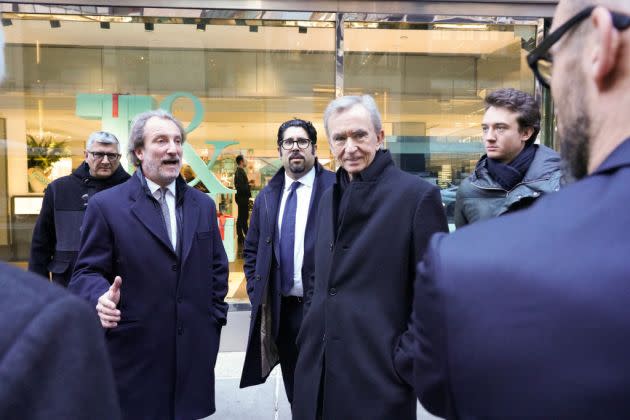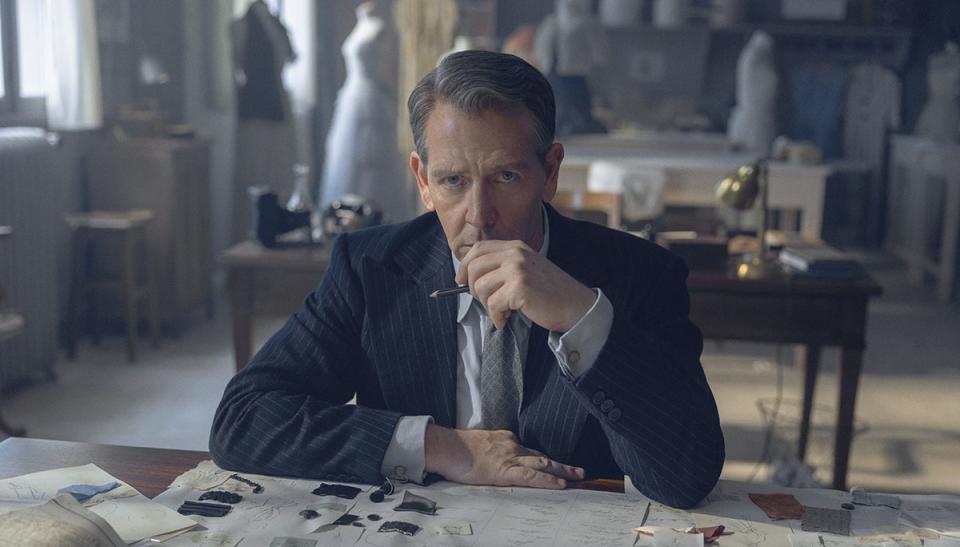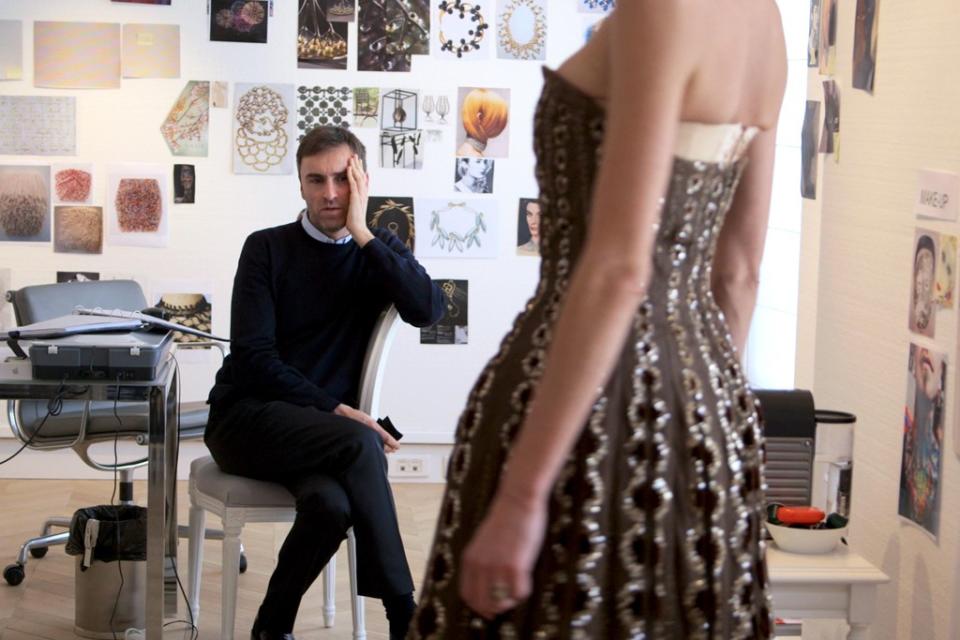LVMH 22 Montaigne Entertainment: Anish Melwani Talks Strategy, Project Parameters and Goals

Global luxury leader LVMH Moët Hennessy Louis Vuitton this week signaled its intent to get more deeply into the entertainment business with the launch of 22 Montaigne Entertainment, a venture to explore the potential across film, TV and audio for its more than 70 maisons, including Dior, Louis Vuitton, Tiffany & Co., Moët & Chandon and more.
The venture was created in partnership with Superconnector Studios and its cofounders Jae Goodman and John Kaplan, who come from marketing backgrounds. They were initially connected to LVMH through their former Creative Artists Agency colleague Hector Muelas, who is now chief brand officer at Tiffany & Co.
More from WWD
Gucci Designer Sabato De Sarno on Miley Cyrus' Bag, Commercial Pressures and Runway Showmanship
LVMH Launches 22 Montaigne Entertainment to Explore Its 70 Maisons' Potential Across Film, TV
“During his orientation, they took him to the Tiffany archives and we got a text from him that just said, ‘I need your help,'” is how Kaplan tells it. “He saw a library of the most amazing tales that nobody knows that have to do with Tiffany — pens that signed declarations of peace and love letters from the most famous people in the world across the last 100 years and the jewelry that went with it….He saw the master plans for sports trophies, and said, ‘How come nobody knows about this?'”
That led to meetings with LVMH, and the concept for 22 Montaigne, which will find and fund compelling stories about Tiffany and other brands featuring premium talent that could be podcasts, documentaries, feature films and more.
“Look at what ‘Sideways’ did for pinot noir,” Kaplan said about how the 2005 film juiced production and popularity of the wine. “Could Champagne get a similar lift?” he suggested of the LVMH mainstay, which is facing headwinds in popularity as younger consumers turn away from alcohol.
Of Superconnector’s experience, Kaplan explained that he and his partner have worked with every category of brand at CAA, highlighting as brand-building bona fides the “Hardest Working Person in America” series of films by Oscar-winning director Albert Maysles for Mitchum deodorant that ran on the Sundance Channel, and Goodman’s experience establishing Nike’s Waffle Iron Entertainment.
“We already have a bunch of development going on,” he said, adding that LVMH has brand stories that appeal to many groups. “There’s a Louis Vuitton story for someone who likes Pharrell [Williams] and there’s a Louis Vuitton story for my mom…though my mom actually loves Pharrell. And my kids love Sephora.”
A “Sephora Sweep,” perhaps? Kaplan said everything is on the table.
In terms of distribution, streamers like Amazon, Netflix and Apple+ in particular are looking for partners to get audiences to screens, and LVMH offers deep pockets, wide social reach and live events (including the runways) for cross-marketing.
The 22 Montaigne Entertainment venture will be overseen by a committee of LVMH executives led by Antoine Arnault, who is the group’s head of image and environment, among other roles, and Anish Melwani, chairman and chief executive officer of LVMH North America.
On Thursday, WWD Zoomed with Melwani to chat about the parameters of the entertainment push, and the mechanics of how it will work with the LVMH portfolio of brands.
WWD: Why did you decide to partner with these guys out of all the people in Hollywood?
Anish Melwani: We got connected because one of our colleagues had worked with them before. And they had done the reference example, which is Nike Waffle Iron Entertainment. What I learned in my limited exposure to the industry so far is, there are really very few organizations — I don’t know of any other ones to be honest — that are focused on working with brands. They don’t represent talent, they’re not a studio themselves. But they really have the skill set because they come from the agent side, they come from the production side, and they’ve got some senior folks who come from platforms like Netflix. But they’ve set as their mission to work with brands. These guys we felt were really well aligned with what we’re trying to do.
WWD: Is there content they’ve produced that you admire?
A.M.: I think there is some good content there. But more, just what does it mean for a brand or in our case, a house of brands to be involved in this industry? And by the way, that’s still frankly a question that’s in the process of being defined. I don’t think there are a lot of examples of it.
WWD: Are there stories that you have in mind telling already? And are you looking to start projects from the ground up, or hook into things already in process?
A.M.: This is a two-way dialogue between our maisons and the industry. They could be stories directly about our brands, like “The New Look,” for example, or that having our brands getting involved with would enhance the beauty of the authenticity of the storytelling. And we want to give them a way to find us. Then to the extent that folks in our maisons have stories that they would love to see told, but they also want to figure out if they are really commercially exciting stories…we need an organized pathway to allow them to do that.

WWD: What was the test case for you for how entertainment can help the bottom line of your maisons?
A.M.: The connecting piece to that is culture and entertainment has always been a far more powerful mover of culture than advertising. And the other piece is with the rise of streaming. Much of the affluent population in the world pays not to have their entertainment interrupted by advertising. So, of course, we’re still doing advertising and that’s a part of our business model.…But now people are able to consume entertainment that’s more suited to them, and they don’t want it to be disrupted by advertising.…So perhaps this is a moment where organizing it a bit more will make sense.
WWD: Will everything you do be branded, like a Marc Jacobs biopic? Or could it be something more subtle like a limited series about a crazy family of Champagne makers that happens to mention some LVMH brands?
A.M.: It could be any of the above. This is explicitly not about product placement. There are already product placement deals, and there’s a very well-groomed process that’s going to continue to work as it has. This is really about storytelling.
WWD: Will it also be about controlling the narrative or will there be freedom, which traditionally has led to better fashion entertainment content?
A.M.: It’s a great point. And everything will depend on the project. Of course there are elements that we have to make sure are protected because we would not want to be involved in something that shows elements of our maisons or histories in a negative light. On the other hand, my personal bias is if we don’t give the storytellers the freedom to do what they do, what their gift is, then frankly we won’t get to work with the best storytellers. And the stories won’t be as compelling to the audiences.
WWD: Do you see doing more mass projects and more niche ones?
A.M.: There’s no constraint, I don’t know whether you would call “The New Look” mass or niche, it doesn’t matter because it’s certainly very well done.
WWD: But some of the LVMH documentaries have been more niche and esoteric.
A.M.: Documentaries in general tend to be more niche than scripted, but there really is not, at least for me, and in my conversations with Antoine and with Mr. [Bernard] Arnault and the other leaders in the group, any preconceived notion. There could be a podcast series that emerges from this, potentially.
WWD: Audio is also included in your strategy…would that include producing music?
A.M.: This is really more about longer-form storytelling. So it doesn’t mean that I don’t want to but again.…I’m not sure that there’s as much of a need.…The music industry knows how to reach us and a lot of artists use our brands and names in their work and stuff like that. So I don’t know that there’s as much of a need for this sort of organization that we’re putting together.
WWD: One of the pain points in the intersection of fashion and Hollywood content has always been that there’s often a lack of alignment in terms of timing with being able to sell product through that content. Is there any plan to bring these two worlds together more closely so that would be possible?
A.M.: That’s not the design. At the end of the day, what the boss [Bernard Arnault] has always said is you build brand desirability for the business and the sales follow afterward. So this is really about our heritage, our DNA, these amazing stories that we tell in our way already. If you go into a Louis Vuitton retail store and you ask them about the Noe bag, they’re going to tell you about how that bag was designed to hold five bottles of Champagne. That’s actually what defined the thing. If you’ve seen our Christian Dior exhibit, that’s another form of storytelling that we do really well. Entertainment storytelling is another skill. The commercial goal is really about another path to building brand desirability by finding a way for great entertainment storytellers to come into contact with the IP and heritage that we have in our maisons, and hopefully those come together in something cool.
WWD: Do you have any projects that are already lined up or any idea of how many you want to do this year or the pace of this thing?
A.M.: Honestly, no. But to answer your first question there are a few projects that are already in discussion that came out of some early meetings before we even made a decision to formalize this and put some structure around it. And with 75 maisons it’s impossible to try to say what the scale is going to be. But that’s also part of the point, that it’s not really a centralized effort. Because it’s not like we’re going to do 10 projects that LVMH is going to decide to do. It’s more like we’re probably going to get pitched, I don’t know, 30 projects, and those will go to the relevant maisons and maybe out of those 13 —and I’m totally making this up — so maybe 10 of them will be ones that the maisons will get excited about and want to put some energy into getting together with the storyteller to take it forward. It’s each maison’s own decision; it’s not like there’s a constraint at the corporate level.
WWD: Was there any sort of looking around at what other players are doing in the Hollywood space, Kering with CAA, for example, that spurred this?
A.M.: Honestly no. Again, to be clear, with no disrespect to what they’re doing, this was much more of an evolution of like you gave the example yourself of “The New Look,” and I don’t know if you remember the documentary “Dior and I” about Raf Simons’ first Dior couture collection. We were already kind of doing this but doing it very ad hoc.

WWD: Will there be dedicated offices for this in Paris?
A.M.: This is super asset-light. I’ve got a couple of people on my team who will help with some of the organization. We’re going to be working together with some of the other executives in Paris, our finance team, our image team under Antoine. But the idea is not to build a bureaucracy for this because at the end of the day, the maisons always decide whether or not it’s something that’s exciting for them or not. So it’s much more about giving them qualified introductions.
WWD: LVMH has some of the deepest pockets in the world. Are you going to have a lot of financing to direct toward this because you’re going to be having people knocking down your door?
A.M.: I mean, again, ultimately, the question will be up to every maison. So if a project is presented and the storyteller is looking for financing and the maison wants to put in financing, that’s their P&L [profit and loss], it is their prerogative. There’s no budget at the group level to go do this. And, frankly, I think the bias is against it. Because what everyone in the industry is taught is that when you have a great storyteller and a great project, and everyone’s feeling it, there’s not a problem getting financing. But that being said, if there is a need for some financing, to get something to a certain stage in order for that vision to be able to be seen by the distributors or what have you, getting that’ll be something we can consider but it will really be the maison’s call because it’s their brand.
WWD: And will this work both ways, like if Pharrell wants to make a movie, can he come to you and pitch something about his journey at LV with a certain storyteller?
A.M.: We’ve not designed this with constraints.
This conversation was edited for brevity and clarity.
Best of WWD

